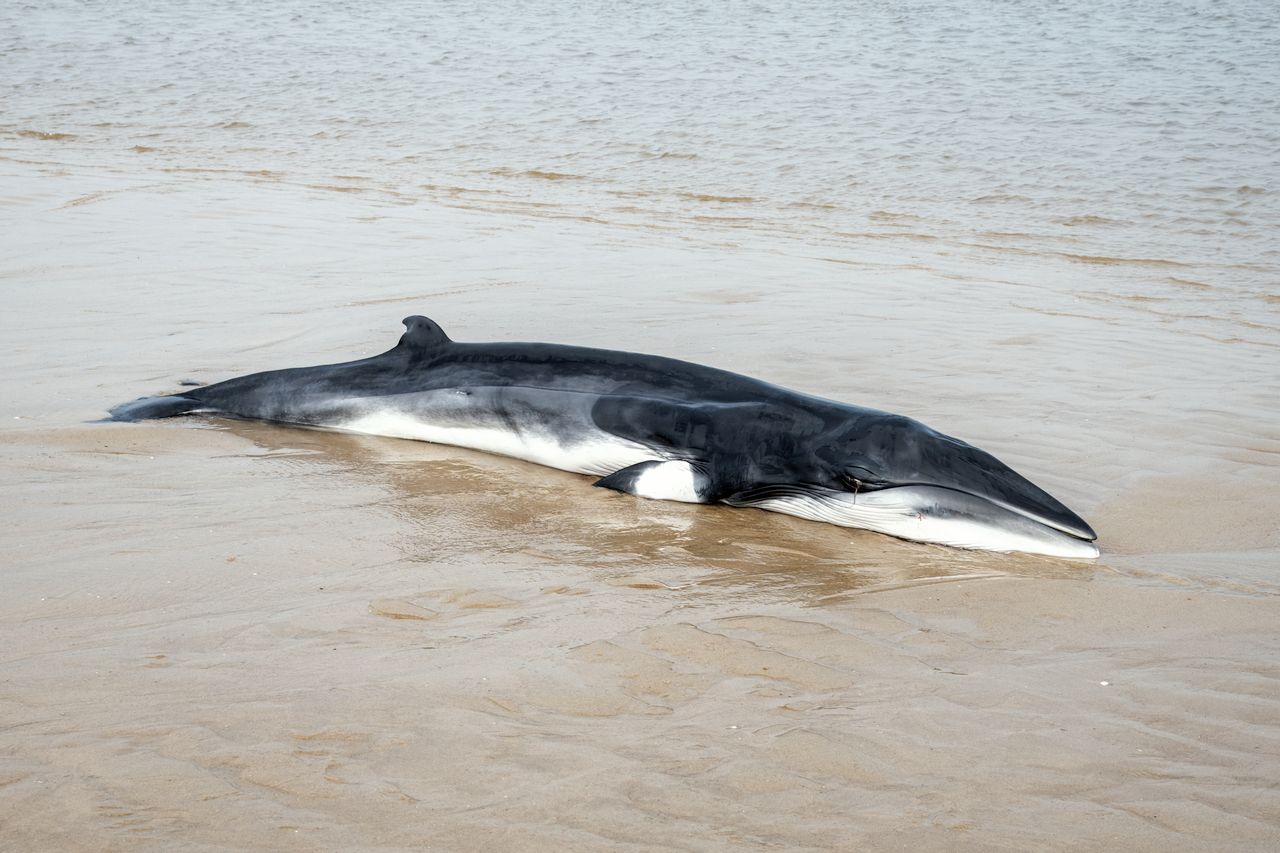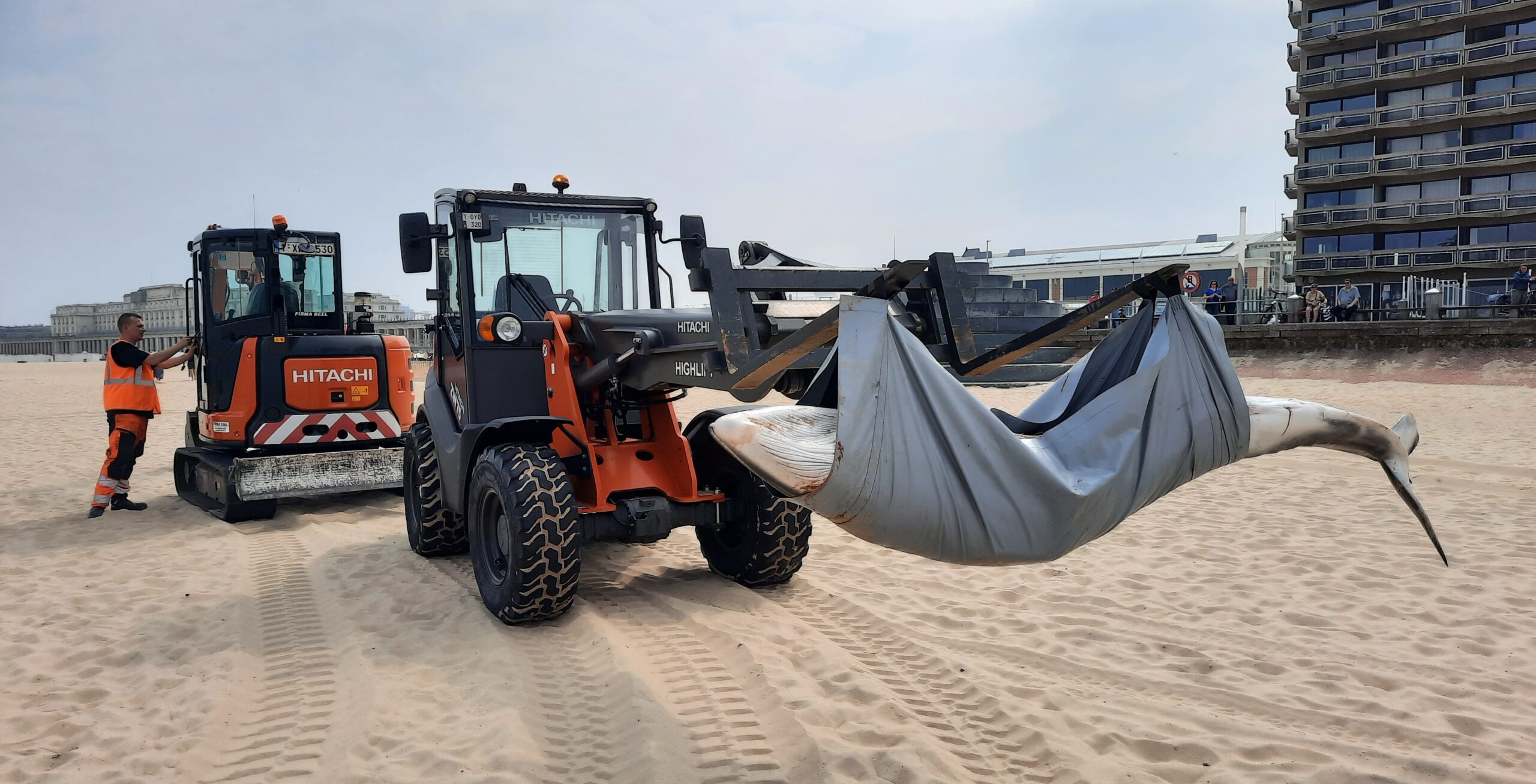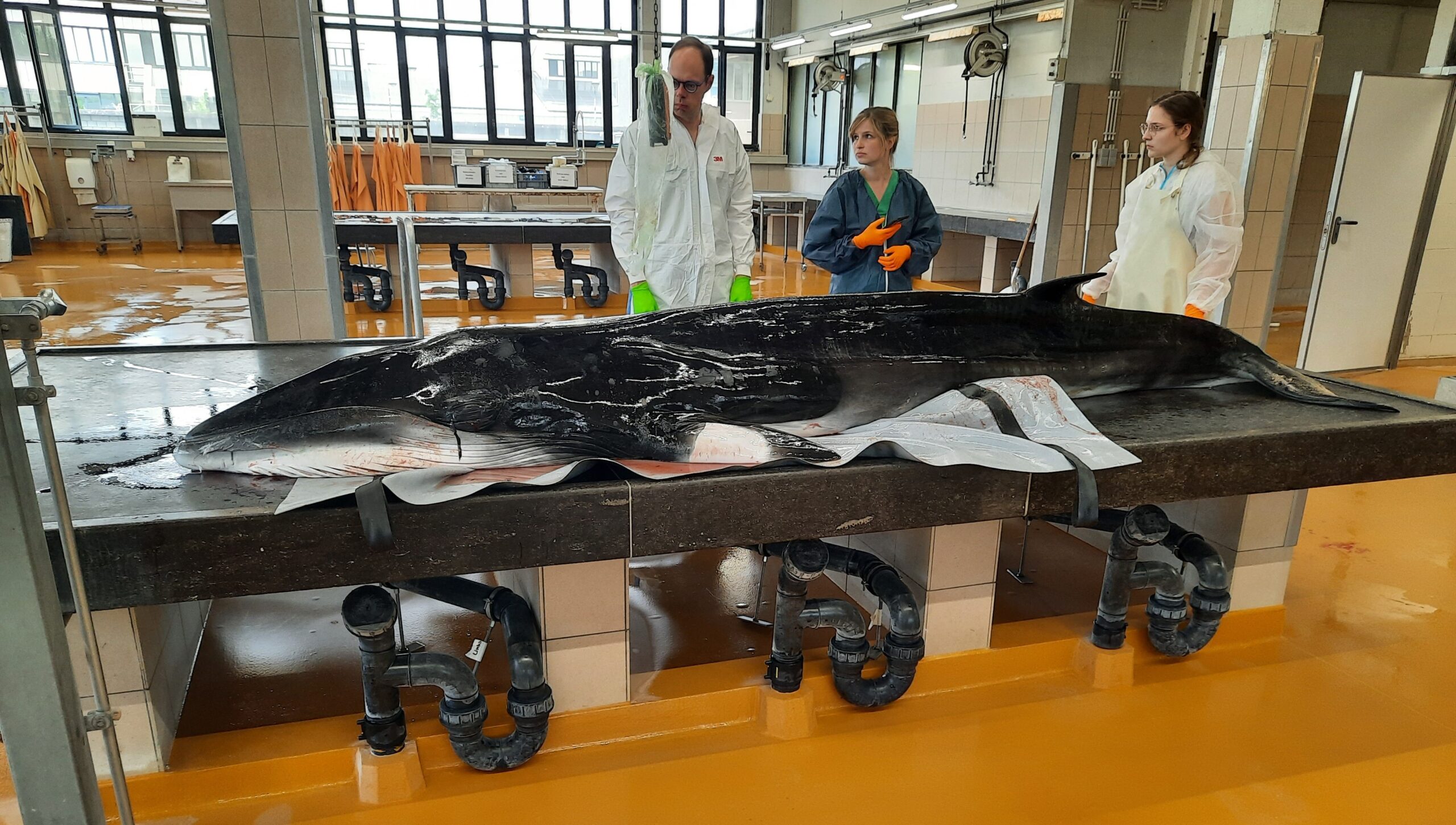A young male minke whale that washed ashore in Ostend on May 13 most likely died of starvation. The empty stomach, the low weight and the thin layer of fat all point in that direction. The ‘fresh’ animal probably became separated from the mother for an unknown reason. Although sightings of dead and living minke whales have become more frequent in recent years in the south of the North Sea, their washing up on a Belgian beach remains an exceptional event.

On the morning of May 13, 2024, a hiker found a dead, young minke whale (Balaenoptera acutorostrata) on the beach of Ostend, near the Casino Kursaal. Lead rescuer Jonathan Devos saw the animal – then still of unknown identity – floating in the coastal water shortly before. The area around the washed-up animal was cordoned off so that the emergency services and scientists from the Institute of Natural Sciences could organize the evacuation of the animal.
“It was immediately clear that it was a very young, very thin and only recently deceased animal,” says Jan Haelters, marine mammal expert at the Institute of Natural Sciences. “Minke whales measure only 2.5 to 2.8 m at birth, so we suspect that this 3.16 m specimen is only a few months old. At that age they are still highly dependent on their mother.”
From the fresh condition of the animal it can be deduced that it probably died shortly before, or during, the stranding. The cadaver was transferred to the Faculty of Veterinary Medicine of Ghent University, where a team from Ghent University and Liège University performed an autopsy the same afternoon.

Autopsy Results
The Ostend minke whale turned out to be a young male.
“Its weight was only 214 kg, which is very little for an animal of this size. Even at birth they weigh heavier, up to 450 kg. It was therefore not surprising that no food remains were found in the stomach,” says Wannes De Clercq, who attended the autopsy for the Institute of Natural Sciences.
“The findings suggest that this minke whale became separated from its mother, which is obviously problematic for a young animal that cannot yet provide for its own food supply” Wannes added. The thin layer of blubber (only 7 mm thick) also supports the hypothesis of death by starvation. A small piece of plastic in the stomach is not related to the death.

Belgian Minke Whales
The minke whale is a permanent resident of the North Sea, but its range is mainly limited to the northern and central part of it. The species appears less often in the south of the North Sea, although the frequency of sightings of living and washed-up minke whales seems to have increased here in recent years.
Jan Haelters provides details: “We know of eleven proven cases of minke whales in Belgian waters over the last 25 years. Five times it involved carcasses and six times it involved sightings of live specimens.”
The carcasses date from 2004 (found dead at sea and brought ashore; died from bycatch), 2013 (stranded; died from swallowing a large amount of plastic), 2017 (decomposing carcass at sea), 2020 (malnourished and broken lower jaw) and 2023 (decomposing carcass at sea, later washed up in the Netherlands).
The living minke whales were spotted in 2013, 2017, 2019, 2020 and twice in 2024. The latter animals were observed on March 20, 2024, from the RV Belgica by scientists from the Research Institute for Nature and Forest (near the Fairybank) and on April 23, 2024, during an aerial survey of marine mammals by the Institute of Natural Sciences (near the border with English waters).
